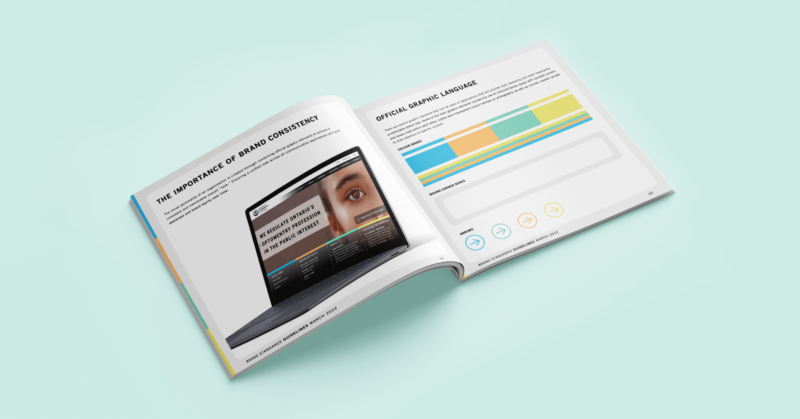
Now more than ever, establishing a strong and recognizable brand is essential, not only for for-profit businesses but also (and especially) in the nonprofit world. But we know that maintaining a consistent brand identity across your various communications channels is not an easy task – there are many elements to consider. Here is where a brand standards guide comes into play! In this blog post, we’ll explain what a brand standards guide is and the impressive benefits it can bring to your nonprofit. Let’s start!

What Is a Brand Standards Guide?
A brand standards guide, AKA brand style guide or brand guidelines, is a document that outlines the visual elements that define your brand. The purpose of this document is to assist your team in keeping your brand identity identifiable and aligned with your nonprofit mission and values and ensure that it remains consistent across all communication channels.
Here’s what a brand standards guide normally includes:
Mission and Values: To help stakeholders and anyone working with the visual identity align with the organization’s purpose, the brand standards guide contains a brief overview of the nonprofit’s mission, vision, and values.
Logo Usage: This section includes detailed instructions on how to use your organization’s logo, including variations (colour, black and white), clear space around the logo, minimum size requirements, what not to do with the logo, and use of symbol on its own.

Official Colours: This part includes the primary, secondary, and accent colours that should be used to develop print and digital communication materials (presentations, publications, designs, etc.) along with colour codes (Pantone, CMYK, RGB, HEX) to ensure accurate reproduction.

Typeface: It states the primary typography and font family and contains formatting guidelines and styles, including sizing and spacing for headings, body text, and other elements.Graphic Elements: Provides the details of the graphic elements that can be used on various applications to provide style, flexibility and, most importantly, a memorable brand look.

Photography and Images: This section gives guidance on the style, tone, and usage of images and photography to properly align with the brand’s visual identity.
Layout Examples: Mockups for key design applications such as print materials, signage, website, social media graphics, and presentations.

Now that we’ve defined what goes into a brand standards guide, let’s talk about the numerous ways nonprofits can benefit from it.
What are the Benefits of a Brand Standards Guide for Nonprofits?
Mission Alignment: The brand guidelines document will ensure that the brand identity aligns with the organization’s mission and values, communicating its purpose effectively to the public.
Professionalism: A well-defined brand image enhances the nonprofit’s professional profile, making it more appealing to potential partners, employees, volunteers, and donors.
Consistency: The brand standards guide helps your nonprofit maintain a consistent visual identity and messaging across all communication materials and platforms, helping to build trust and credibility with stakeholders.
Brand Recognition: A powerful brand identity makes it easier for people to remember and recognize an organization, ultimately increasing its awareness and impact.
Clarity: It sets a clear example for employees, volunteers and partners as to how the organization should be represented, reducing the likelihood of misunderstandings or misrepresentation.
Efficiency: With these guidelines and mockup examples, the design and marketing process becomes straightforward, saving valuable time and resources.
Harness the power of a brand standards guide and make your nonprofit brand shine brighter than ever before! Click here to view our latest brand identity and brand standards guide design project for Food Banks Mississauga.

